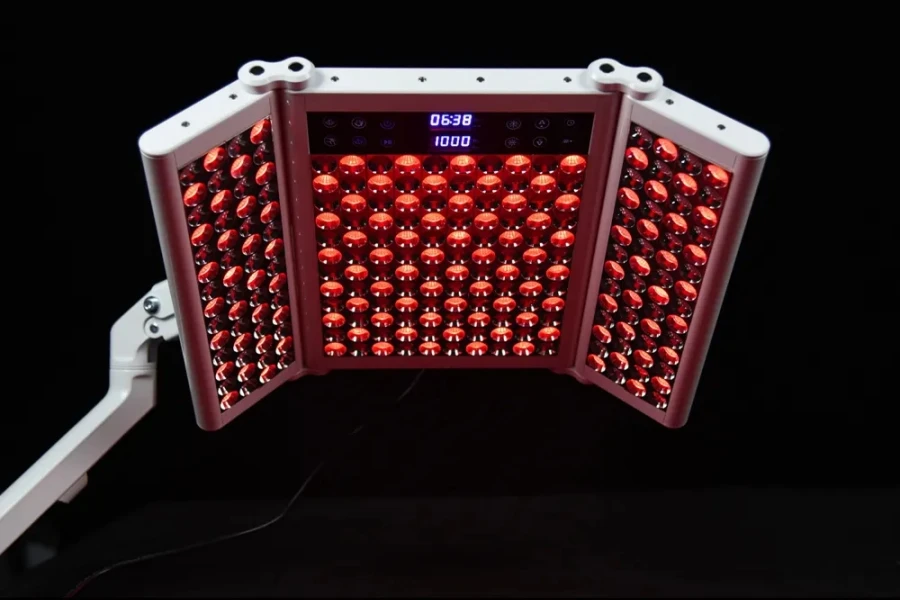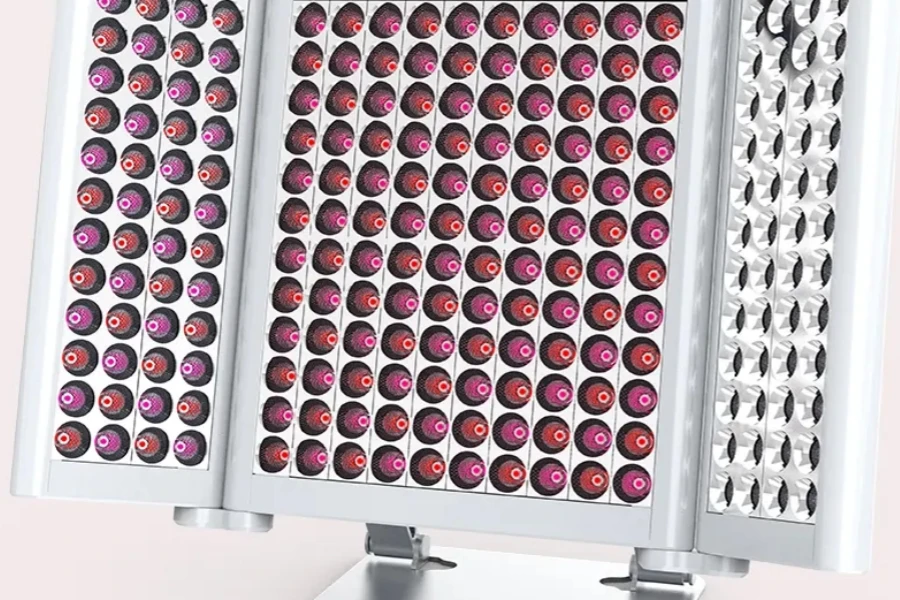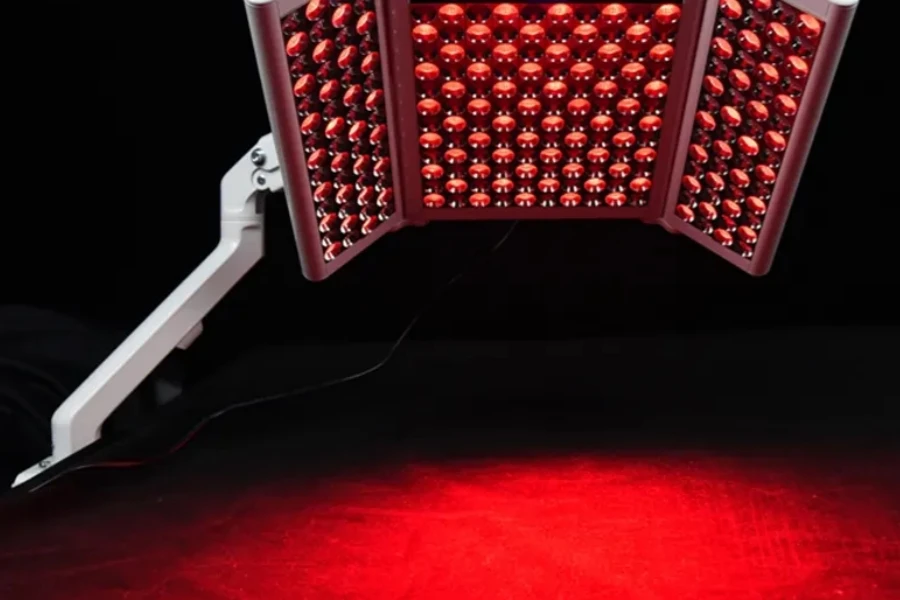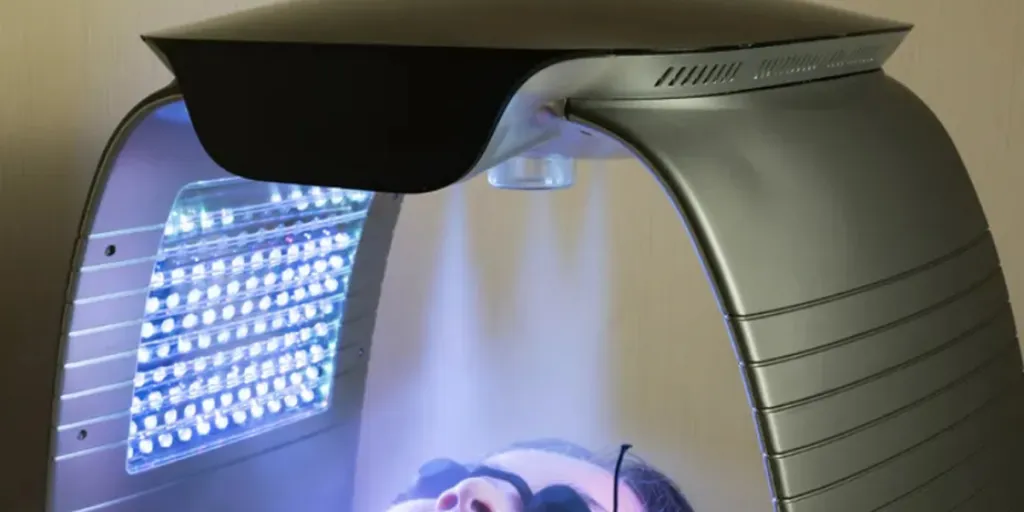Photodynamic therapy (PDT) has emerged as a groundbreaking treatment in the world of beauty, offering consumers a way to tackle skin issues without going under the knife. PDT machines have therefore emerged as the best way to leverage this therapy, working wonders on skin around the world. However, given that it is such a new technology, many businesses in the beauty industry may still be unfamiliar with how exactly it works.
In this article, we’ll explore what makes these machines tick, why they’re becoming increasingly popular among beauty-minded consumers, and how sellers can choose the right machines for their business in 2024.
Table of Contents
What are PDT machines?
An overview of the PDT market in 2024
The benefits of PDT machines as an aesthetic treatment
Key considerations when purchasing PDT machines
Summary
What are PDT machines?

Photodynamic therapy is a medical wonder, and PDT machines are the best way to leverage its benefits for aesthetic purposes. These machines use light, special agents, and oxygen to zap away various skin conditions. But PDT machines don’t just use any bulb; they utilize light sources that emit specific wavelengths.
PDT machines target affected areas and conditions in a non-invasive way by destroying diseased or unwanted cells. This is one of the reasons why PDT machines are a top treatment choice for acne, actinic keratosis, and certain types of skin cancer.
An overview of the PDT market in 2024
According to data, the global photodynamic therapy market’s global value stood at USD 4.52 billion in 2023 and is expected to grow at an 8.6% CAGR to reach USD 8.02 billion by the end of 2030.
The market owes this rapid growth to the increasing rates of skin cancer and the increasing demand for minimally invasive procedures. North America will command the highest market share over the forecast period, with the region currently accounting for 30% of the overall market share. Europe also ranks as the second-largest PDT market at 25.3%, while Asia Pacific registers as the fastest-growing region, with experts forecasting its market share to increase by approximately 20.4% over the forecast period.
The benefits of PDT machines as an aesthetic treatment

PDT machines are not just a great way to undergo photodynamic therapy; they come with several other benefits, including:
1. Versatility
PDT machines are incredibly versatile, reducing symptoms related to skin conditions such as acne, rosacea, sun damage, and precancerous lesions. This versatility makes them valuable tools for dermatologists and aesthetic practitioners, especially those looking to provide a wide range of solutions for various skincare needs.
2. Non-invasive nature
Unlike many traditional dermatological procedures, PDT machines are minimally invasive. For this reason, they are great for consumers seeking a gentler form of therapy. The absence of injections or incisions eliminates the scarring and other lasting effects related to invasive procedures.
3. Customization
The best part about PDT machines is their customizable treatments. Dermatologists and aesthetic practitioners can easily customize them to meet clients’ unique needs and preferences. Most parameters (such as the special agent used, light intensity, and treatment duration) are adjustable, allowing experts to effectively tailor their services for specific skin concerns.
4. Minimal side effects
Unlike other aggressive treatments (laser therapy and surgical excision, especially), PDT machines boast minimal side effects. And while there are some common side effects related to PDT treatments (like redness, swelling, and mild discomfort), these typically resolve a few days after therapy, allowing patients to resume their normal activities in no time.
5. Collagen production stimulation
Treating existing conditions is not the only thing these machines can do – they can also stimulate collagen production, helping to improve skin texture tone and overall appearance.
Key considerations when purchasing PDT machines
Light source

Choosing the right light source for a PDT machine is arguably the most important factor in whether PDT treatments are likely to be effective or not. It’s no surprise then that choosing the perfect light source requires understanding what’s available. Here, we’ll take a closer look at some of the main types:
Light-emitting diodes (LEDs)
LED lights are commonly found in PDT machines thanks to their ability to emit specific wavelengths and effectively target different skin conditions, especially more superficial skin problems like acne. The color of the LEDs is a factor in which treatment they’re better suited to: blue light (400nm) is best for superficial concerns like acne, while red light (650nm) can travel deeper into the skin, penetrating up to 1cm for stubborn skin concerns.
Lasers
PDT machines that use laser light sources provide concentrated and intense light beams, allowing them to target specific areas or skin conditions precisely. Also, since lasers offer highly focused, intense, monochromatic light, they are ideal for treating areas below the skin’s surface.
Lamps
Lamps are popular for being able to emit light across a broad spectrum. Although less common in modern PDT machines, lamps offer an amazing way to leverage multiple wavelengths for activating different photosensitizers (special agents). The most common lamp types include tungsten filament, xenon arc, metal halide, and fluorescent.
Photosensitizing agents

Different photosensitizing agents exist for different photodynamic therapies, each offering varying absorption spectrums and phototoxicity profiles. This relates to the way different photosensitizing agents absorb light at different wavelengths and express varying levels of toxicity when they are activated.
These factors can significantly impact the treatment’s safety and effectiveness. Hence, sellers must offer PDT machines that are compatible with various photosensitizers. Additionally, these machines should have an accurate dosing mechanism to ensure consistent and reliable treatment outcomes.
Treatment parameters
PDT machines are usually customizable via adjustable treatment parameters like light intensity, duration, and fluence rate. Machines with adjustable parameters ensure that professionals can provide tailored treatment plans. When coupled with intuitive user interfaces and customizable presets, clinicians can provide a more streamlined and efficient treatment profile.
Safety features
As with any health-related tech, sellers must prioritize PDT machines that feature integrated advanced safety measures. These include built-in cooling systems to prevent overheating and discomfort during treatment, real-time dosimetry monitoring to ensure dosage delivery, and ergonomic design elements to enhance comfort.
Summary
PDT machines could be classified as a modern wonder, using light and special agents to tackle various skin issues without the need for invasive surgery procedures. Their versatility makes also them one of the best aesthetic treatment machines to stock up on in 2024. However, before doing so, sellers must take the time to research factors such as light quality, treatment agent compatibility, and safety features.
If you’re looking for PDT machines or other cutting-edge tech solutions, browse the thousands of options on Chovm.com today.




